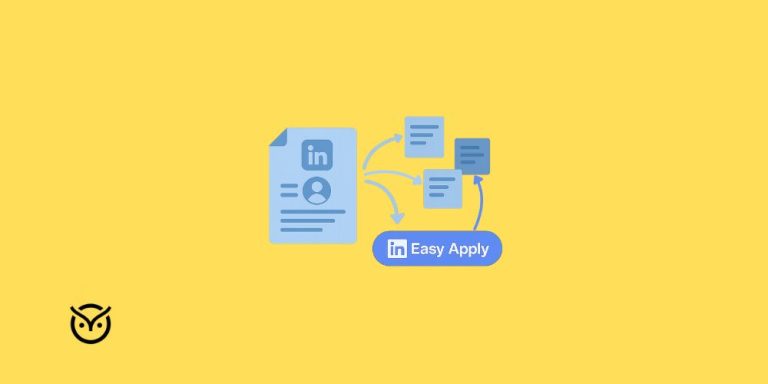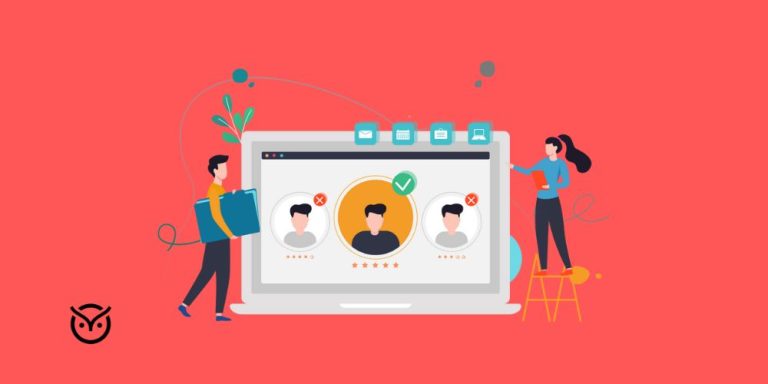AI Candidate Matching for Smarter Recruiting

TL;DR
- AI links candidates to the right roles faster and more accurately.
- Helps with both active applicants and passive talent who aren’t applying.
- Natural language search lets teams filter instantly by skills and experience.
- AI ranking supports fairer, skills-first decisions.
- Great for scaling hiring without overloading recruiters.
Hiring teams today face a painful but straightforward problem. Too many resumes. Too many role variations. Too many passive candidates who would be a perfect fit but never show up in an inbox. This slows the process, increases the chance of bias, and makes it harder to keep up with the speed companies expect.
That’s why teams are turning to AI candidate matching for smarter recruiting. Modern AI tools read resumes, study skills, compare profiles, and instantly match talent to the proper role. They clean up the chaos, help teams find both active and passive candidates quickly, and give recruiters the freedom to focus on honest conversations again.
What Is AI Candidate Matching for Smarter Recruiting?
AI candidate matching for smarter recruiting is a method where systems analyze resumes, skills, work history, and job descriptions to recommend the best-fit candidates. The system doesn’t stop at simple keywords. It looks at the bigger picture, paying attention to experience level, career progress, and how well a person’s background lines up with the job. This is why it performs so well inside AI screening tools, talent assessment platforms, and hiring workflows that need speed and accuracy.
Companies benefit from this because AI matches profiles to roles instantly, which is helpful in both internal hiring and recruitment and in external agile setups where roles shift quickly. Research from SHRM shows that nearly one-quarter of organizations now use automation or AI to support HR activities such as recruitment and hiring, and adoption continues to rise as teams seek faster, more consistent candidate matching.
With many platforms adding features like skills inference and AI-assisted cognitive testing, recruiters gain a clearer view of both current ability and future potential.
Why AI Matters for Active and Passive Candidate Recruiting
Active candidates are easier to find because they apply. Passive candidates are harder because they don’t. AI helps with both without requiring extra work.
For active candidates, AI evaluates resumes right when they arrive. It looks at experience, skills, and achievements and ranks people based on how well they match the role. This ranking style supports fairer shortlists and allows recruiters in the US and globally to make more consistent hiring decisions.
For passive talent, AI systems scan signals across networks and databases to find people with the right background, even if they never hit “Apply.” This strengthens all candidate sourcing channels, especially for companies working with candidate sourcing outsourcing partners or external recruiting teams.
AI makes both sides easier because it understands patterns at scale. It connects skill gaps to job needs. It sees role adjacencies humans might miss. And it helps route each person to the job they actually belong in.
How AI Resume Screening and Candidate Ranking Work
AI resume screening starts with reading. It scans resumes using machine learning models trained on thousands of hiring outcomes. Instead of pulling out keywords, it looks at:
- Skills and tools used
- Projects and achievements
- Years of experience
- Seniority level
- Industry background
- Certifications
- Job transitions and their relevance
This is why AI performs so well in AI resume screening software and across modern hiring stacks. Recruiters can also filter candidates instantly with simple natural-language prompts like:
“Find product managers with 4+ years of experience and a SaaS background in California.”
The system understands the request and presents ranked matches within seconds.
Ranking also helps with fairness. Properly calibrated systems remove demographic information so recruiters see skills, not signals tied to gender, age, or background. This keeps decisions focused on ability and reduces bias risks.
Modern platforms blend resume reading with behavioral signals, role progression, and soft-skill estimates. This is especially useful in AI resume screening and high-volume hiring, where teams can’t manually compare hundreds of profiles.
Platforms That Route Candidates to the Right Roles Automatically
Some recruiting platforms now act like traffic controllers. Instead of forcing recruiters to open every resume manually, these systems read each profile and automatically move candidates to the right job. This helps when a person applies for one role but is a better fit for another. It’s also valuable for fast-moving hiring environments where roles change quickly.
Modern systems use profile matching, skills mapping, and experience scoring to understand where a candidate truly belongs. Tools like Eightfold, HiredScore, and SeekOut use AI to compare a person’s background to hundreds of job patterns. They study job transitions, previous roles, industries, and learning signals to see where someone could succeed. These platforms are powerful in environments with shifting role requirements, high-volume hiring, or a need to evaluate both active and passive talent at the same speed.
This kind of routing also supports external recruitment by helping external teams place candidates more accurately without long review cycles. It’s one of the best ways to use AI to improve candidate matching in modern applicant pipelines.
Best Practices for Smarter AI Candidate Matching
Smarter matching begins with the basics. When a role is written clearly and the skills are spelled out, the system can spot the right people more easily. But if the details are unclear or outdated, the results become hit-or-miss.
Another key practice is using natural language search to filter instantly. Recruiters can type commands such as “backend engineer with cloud skills and 3 years experience,” and the system returns ranked profiles in seconds. This replaces long filter menus with simple, human-friendly searching.
Teams also see strong results when they combine AI screening with human review rather than replacing one with the other. AI should do the heavy lifting while humans confirm final decisions, leading to fairer, more reliable outcomes.
Finally, companies get better matches when they connect sourcing channels, resume screening software, and assessment platforms into one flow. This lets AI follow the candidate from first touch to final evaluation, producing clearer insights and better long-term fit.
Future of AI Matching in Talent Assessment
AI matching is moving beyond simple screening. Next-generation assessment tools are blending resume analysis, behavioral signals, and role-fit predictions to give recruiters a fuller picture of each candidate. Systems are learning to understand career paths, performance patterns, and potential future skills based on how people move across industries.
Another growing trend is the use of skill graphs that map thousands of job roles and skill adjacencies. These maps help AI recognize when a candidate could perform well in a role even if their job title doesn’t explicitly match.
AI will also continue to support fairer hiring. As models learn to separate skill-based signals from irrelevant personal traits, teams get more reliable shortlists that support compliance and reduce risk.
Many platforms are beginning to use conversational interfaces to guide recruiters through the entire hiring process. Instead of navigating dashboards, teams ask direct questions such as “Who are the top candidates for the logistics manager role with safety certifications?” and receive ranked answers instantly.
As talent assessment evolves, AI will become less of a filtering tool and more of a strategic advisor. It will help recruiters understand talent markets, anticipate skill shortages, and plan hiring needs more accurately.
Conclusion
AI matching brings order to messy hiring pipelines. It connects the right people with the right roles, helps teams move faster, and supports fairer talent decisions. With better routing, stronger ranking, and more intelligent filtering, recruiters have more time for honest conversations and spend fewer hours digging through stacks of resumes. The companies that adopt these tools early will gain a clear advantage as hiring continues to speed up.
FAQs
They can type simple requests like “find sales reps with 2 years of experience in the Gulf region,” and the system returns ranked matches instantly.
AI can reduce bias by focusing on skills, experience, and performance signals, but teams should still combine machine scoring with human judgment for the best results.
AI reads resumes contextually, understanding skills, achievements, tools used, and job transitions, rather than relying solely on keywords.






